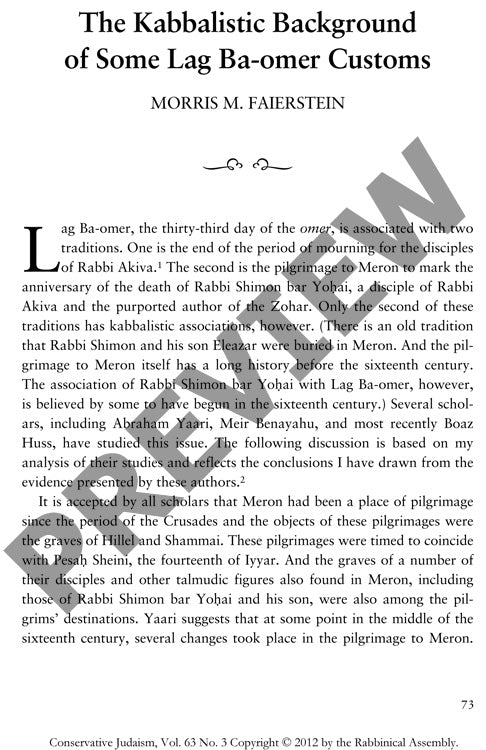The Kabbalistic Background of Some Lag B
Couldn't load pickup availability
Lag Ba-omer's most cherished customs - the Meron pilgrimage, bonfires, and ceremonial haircuts - emerged far later than commonly believed, challenging long-held assumptions about their kabbalistic origins. Through critical examination of historical sources and textual evidence, particularly the works of Abraham Yaari, Meir Benayahu, and Boaz Huss, a different historical trajectory emerges. While Meron had served as a pilgrimage site since the Crusades for the graves of Hillel and Shammai, the specific Lag Ba-omer observances only materialized in the sixteenth century. Notably, Safed kabbalists neither initiated these practices nor fully endorsed them, often expressing disapproval of the festivities' carnival-like nature and typically visiting during other times. The first textual link between Rabbi Shimon bar Yohai's death anniversary and Lag Ba-omer appears as late as 1731 in Sefer Hemdat Yamim. Analysis of Lurianic sources reveals inconsistent accounts regarding kabbalistic support for these customs, suggesting that their perceived mystical foundations represent an eighteenth-century development rather than an authentic kabbalistic tradition.

More Information
-
Physical Description
-
Publication Information
Published 2012
ISBN
-
Publication Credits
Morris Faierstein

